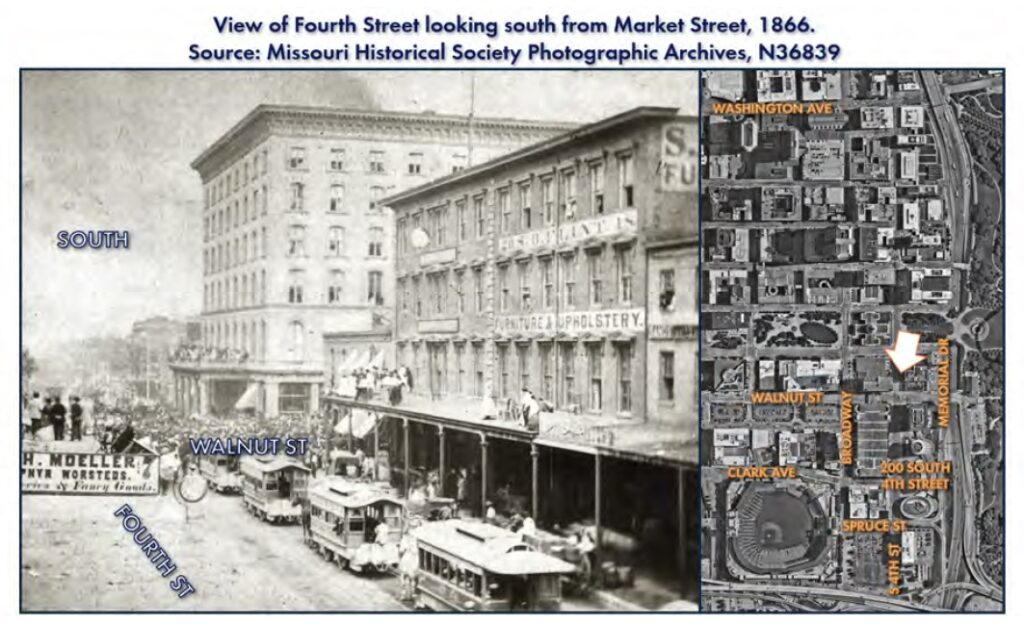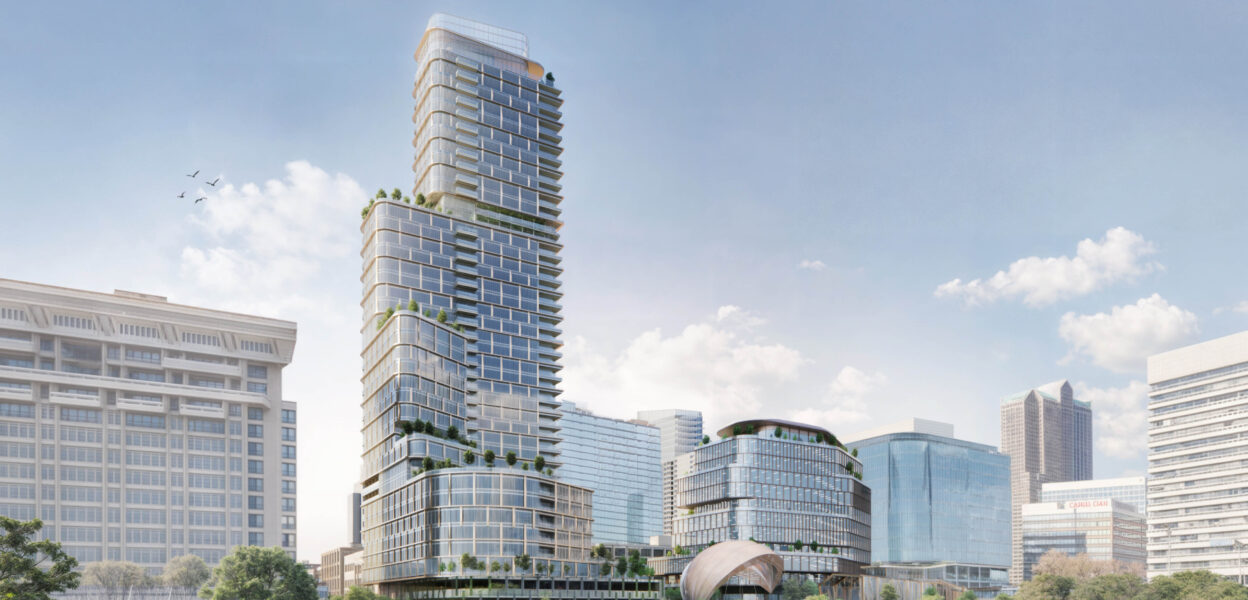On Wednesday the Gateway Arch Park Foundation announced (Press Release) it had chosen The Cordish Companies of Ballpark Village fame to replace the Millennium Hotel site downtown. The GAPF put out a request for proposals last year after it acquired the property, which has been vacant since 2014.
The nearly $670 million preliminary plan integrates 1.3 million square feet of residential, office, commercial, cultural, and public spaces to create a vibrant, multifunctional destination. Key proposed elements include upscale residential, Class A office space, public spaces, an amphitheater, a food hall, event space, a potential home for Gateway Arch National Park’s archives, enhanced streetscapes, pedestrian-friendly spaces, landscaping, and art installations

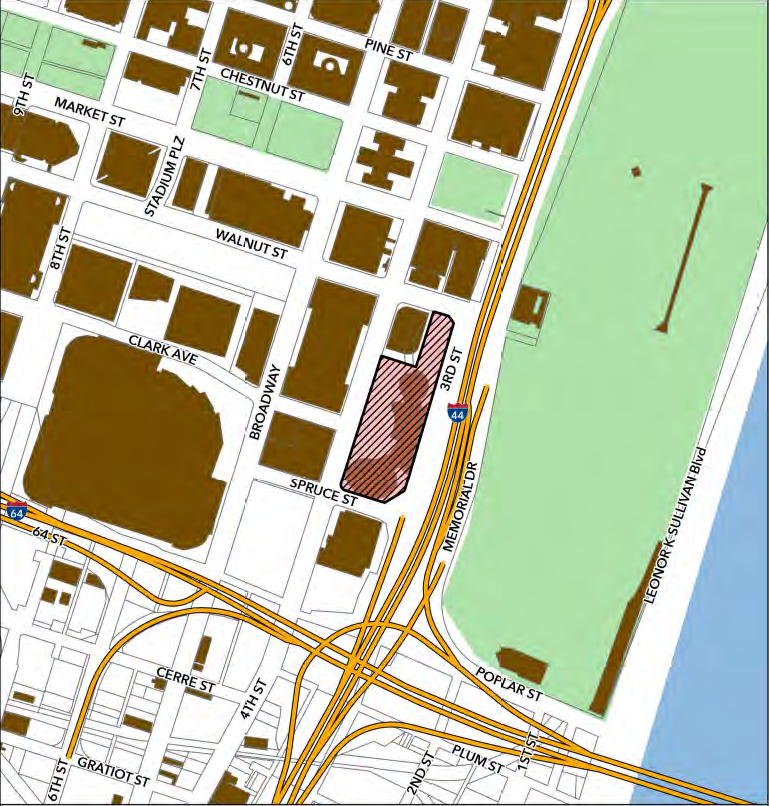
The LCRA will consider designating Cordish as the developer at its Feb 25 meeting. The meeting materials offered some more details. The text description and images are a little inconsistent.
30-story apartment building
585 market-rate units
283k sf office
28k sf retail
33k sf outdoor amenity space
8k sf food hall/winter garden
1,000 space parking garage
$669M project cost
The Development Description image says
Riverline Apartments 41 stories
The Bluffs office 10 stories with rooftop restaurant
The Confluence event space
The Eddy Amphitheater
The Watershed Winter Garden
Arch Archives
Gateway Grind coffee/restaurant/bar at Walnut and Memorial
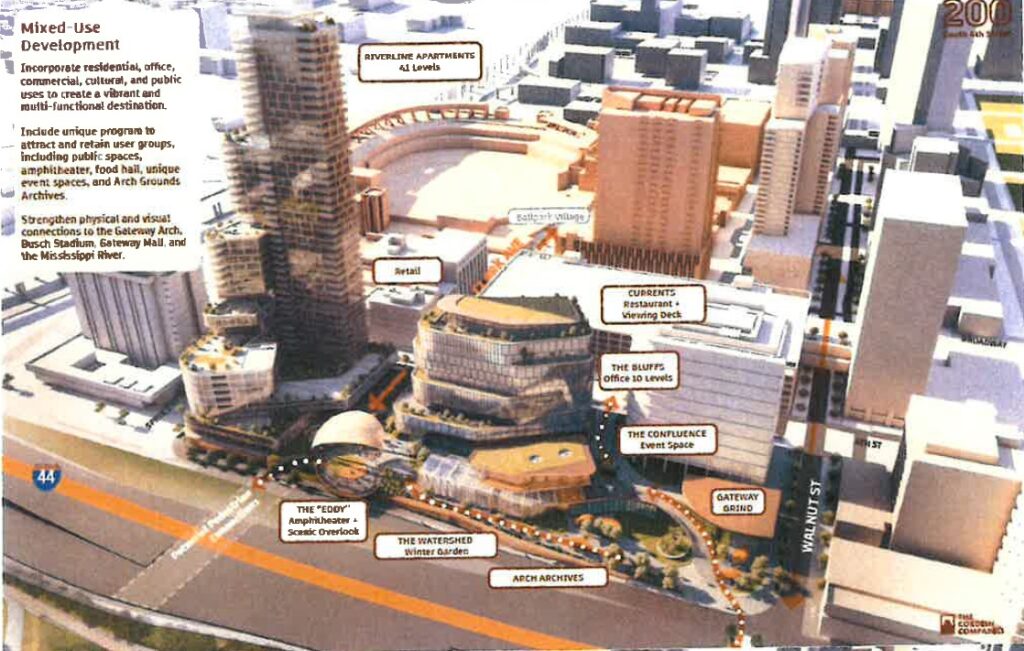
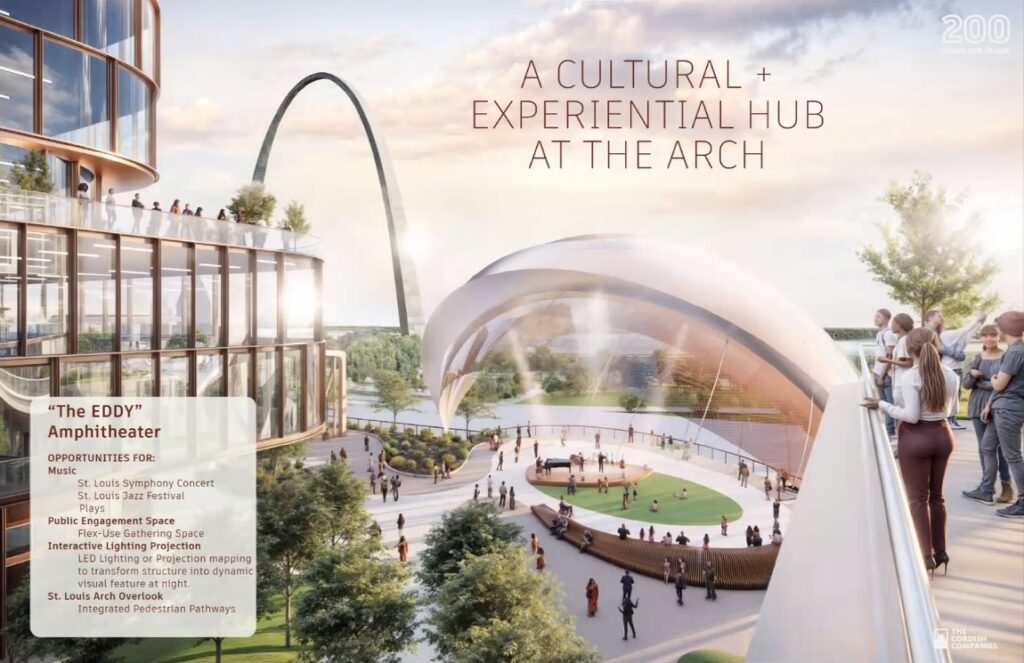
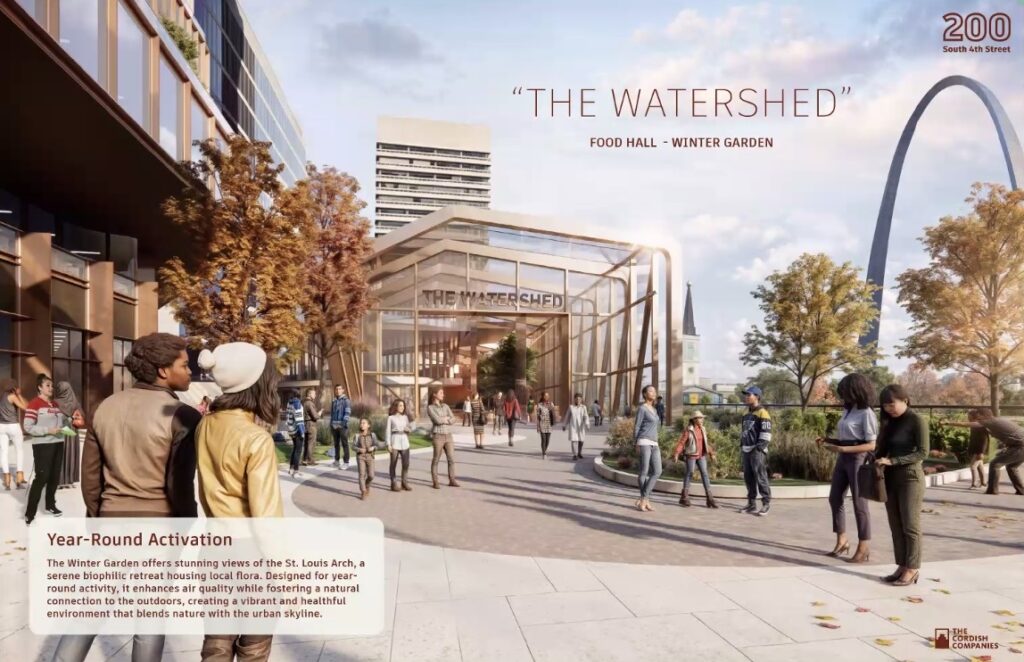
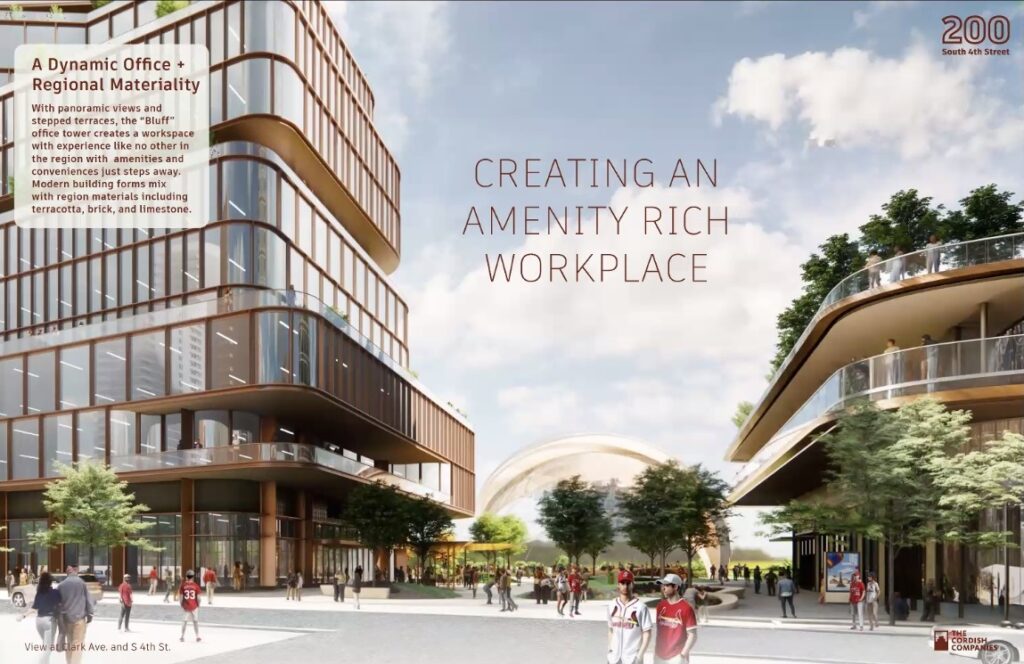
Cordish likely have office tenants interested. Building an office building on spec right now would be insane.
The ~1000 structured parking spaces would be three levels above grade and two below at the base of the tower.

The GAPF also hopes to reclad and add retail to the ugly, vibrancy-killing Stadium East Garage. While GAPF nor the city owns it, GAPF has a relationship with the owner providing parking for Arch Grounds visitors.
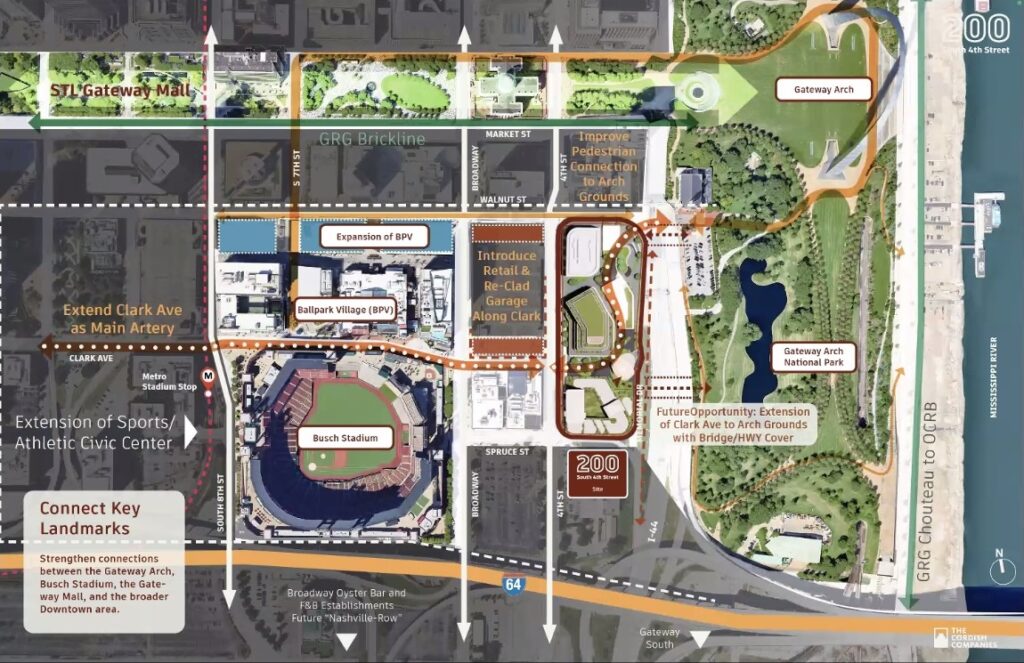
Last September the LCRA Board approved up to 90% property tax abatement for up to 20 years. There was no financial analysis in the upcoming meeting materials. The abatement will go into a board bill for the Board of Alderman to consider. A bill is expected to be filed when the BoA meets next.
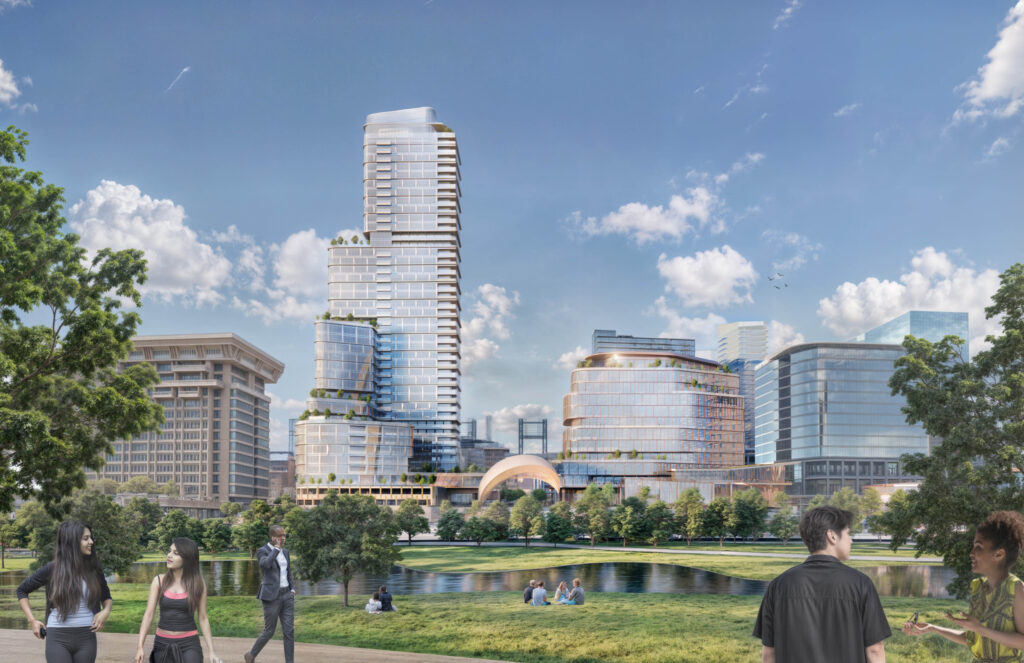
The site is zoned L. Jefferson National Memorial. Like most zoning districts, there is a height restriction. What is different is that it’s defined as feet above sea level rather than the adjoining street. Here it is 751 feet above sea level. 4th St is about 485 feet above sea level. The tower will certainly exceed 751 feet. Putting the tower at the south end of the property was purposeful to open views of the Arch. Cordish will need to seek a variance for height among other things that don’t comply with the zoning code.

A pedestrian area aligned with Clark Street would connect 4th St with Memorial. Here the elephant in the room rears it’s head. The highway cuts the development off from the Arch Grounds. The physical and psychological barrier impedes the goals of the development. Note how the renderings try to minimize it. A bridge at Clark, even only pedestrian, would be tough as the highway hasn’t dipped down into the depressed section yet. Also the noise and pollution need to be mitigated for the amphitheater, scenic overlook, and winter garden.
Ideally the highway would be removed and our city healed. We couldn’t summon the courage to remove it between downtown and the river in conjunction with the construction of the Musial Bridge. Can we summon it now?

The Millennium site will be completely cleared. The area is in a Preservation Review District, so the Preservation Board will likely consider the demolition. The Millennium is not listed among the city’s significant Mid-Century Modern structures. This would be at least the third time the site has been rebuilt. One dreams of the urban vibrancy fostered by the traditional development pattern that existed before the Millennium, shown in this photo from 1866.
